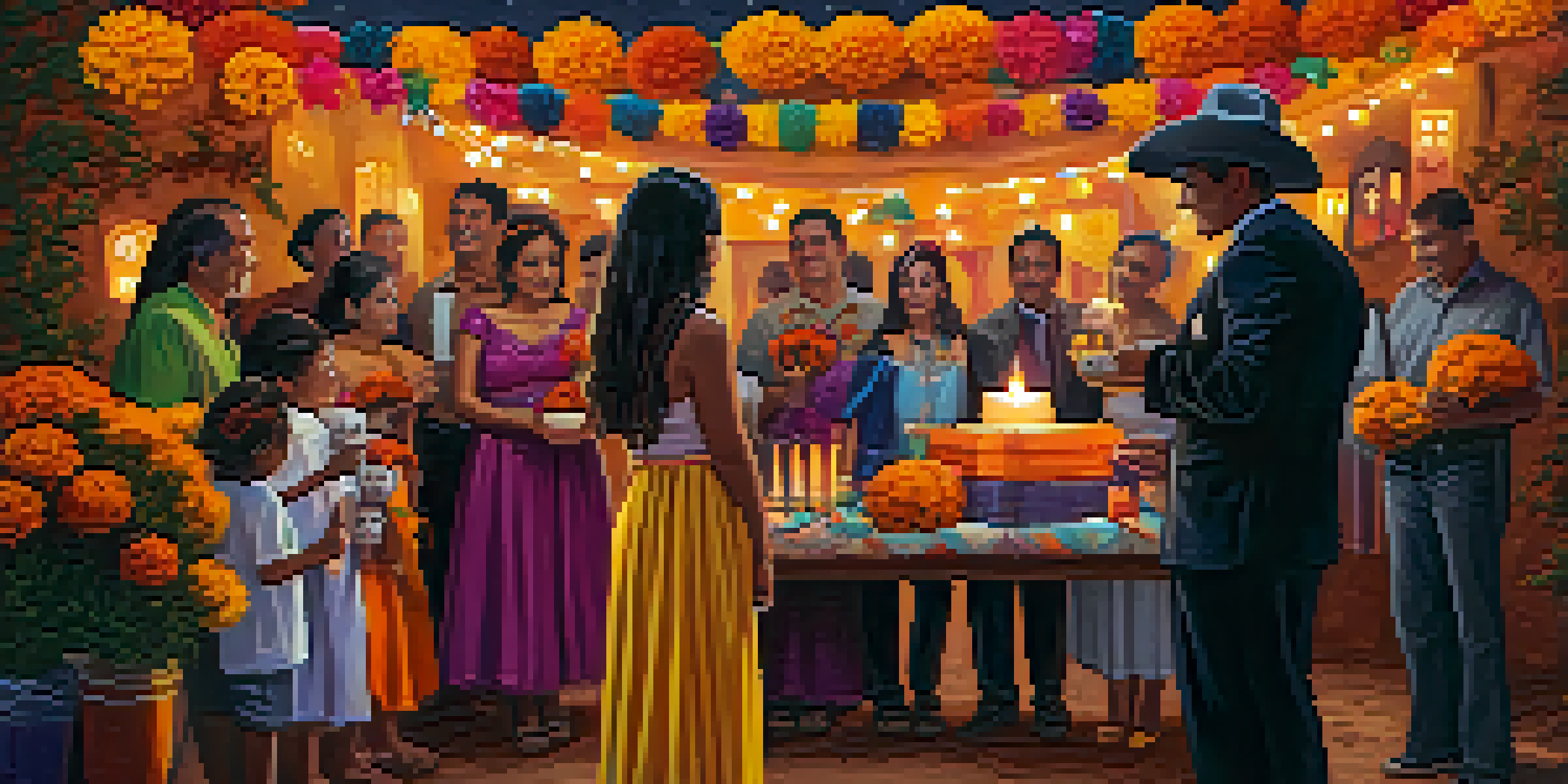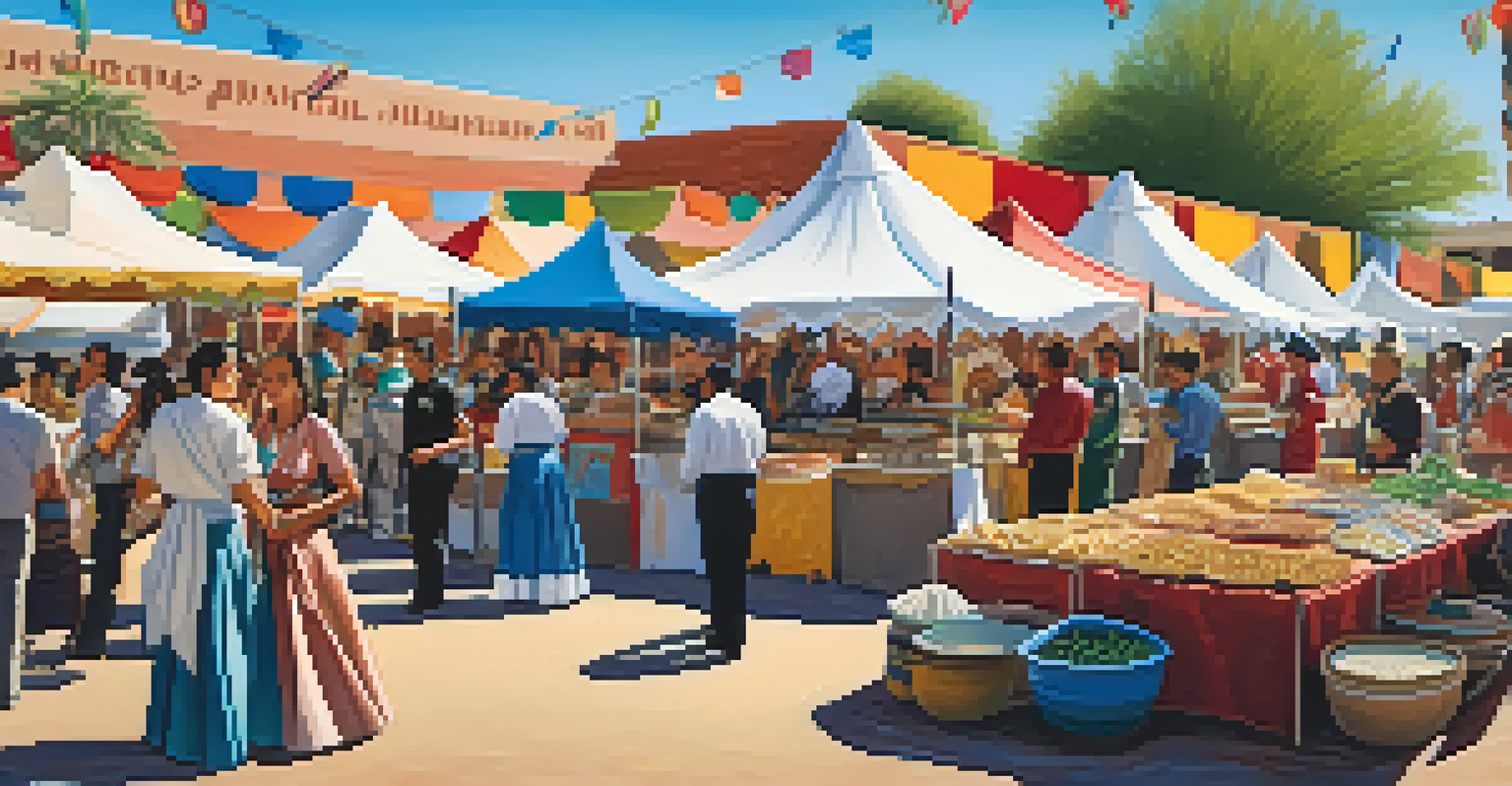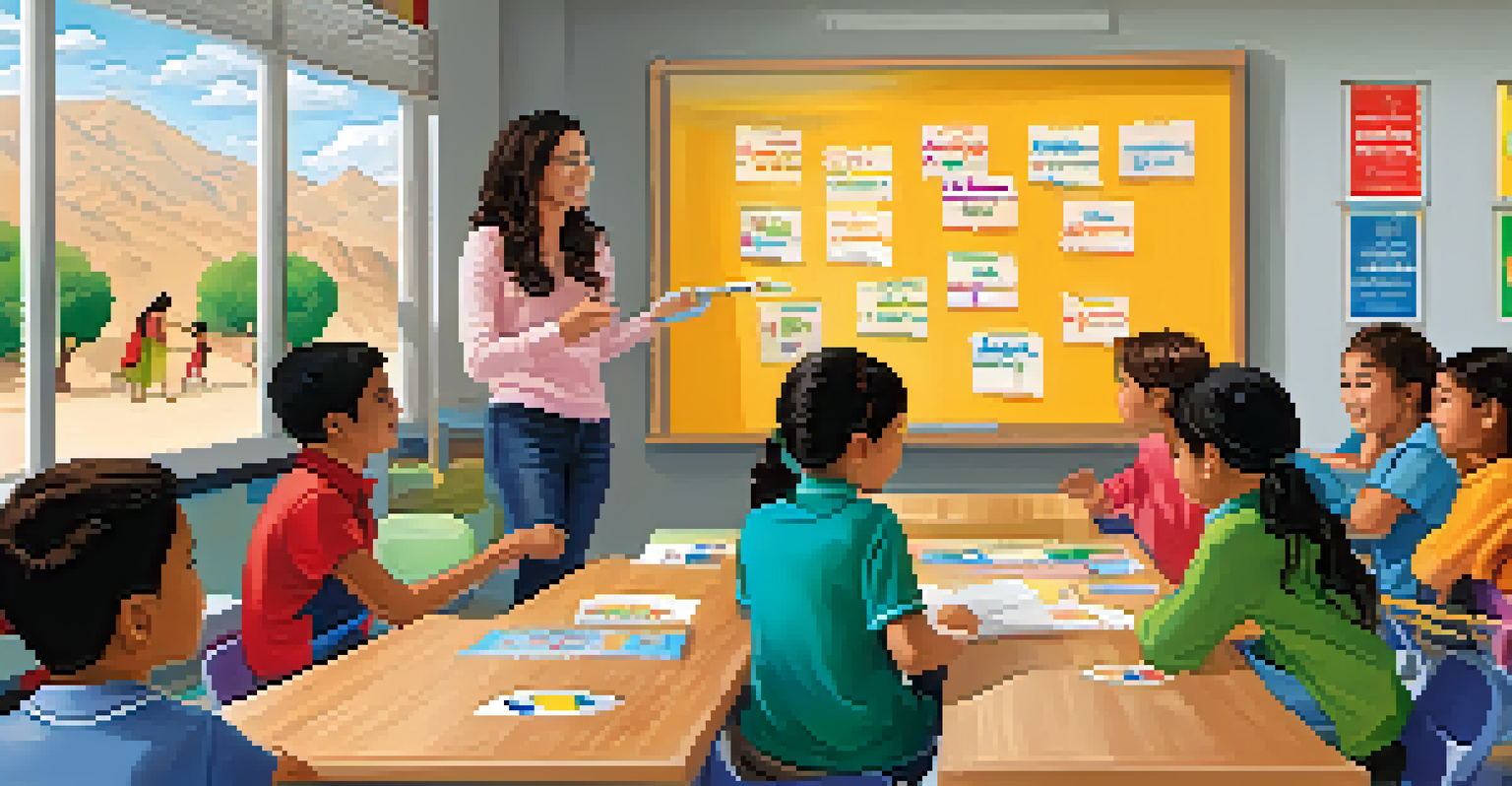Cultural Exchange: Arizona's Role in U.S.-Mexico Relations

The Historical Ties Between Arizona and Mexico
Arizona's history is deeply intertwined with Mexico, dating back centuries. The region was once part of Mexico before becoming a U.S. territory, which laid the foundation for lasting cultural connections. This shared history has fostered a unique blend of traditions, languages, and customs that continue to influence both sides of the border.
The beauty of cultural diversity is that it enriches our understanding of the world and ourselves.
For instance, the annual celebrations of Día de los Muertos (Day of the Dead) in Arizona showcase vibrant Mexican traditions, drawing residents from both nations to honor their ancestors. Such events not only celebrate cultural heritage but also strengthen the bonds between communities across the border. As a result, these historical ties serve as a reminder of the interconnectedness that defines Arizona and Mexico.
In addition, the geographic proximity means that many families have roots in both countries, further enhancing the cultural exchange. This shared history is the backdrop for a larger narrative about collaboration and mutual respect in the region.
Cultural Festivals Celebrating Diversity
Cultural festivals in Arizona play a pivotal role in promoting U.S.-Mexico relations. Events such as the Tucson Meet Yourself festival highlight the diverse cultures present in Arizona, featuring traditional food, music, and art from Mexican heritage. These gatherings create an atmosphere of celebration that fosters understanding and appreciation between different cultures.

Moreover, festivals offer an opportunity for local artisans and performers from both sides of the border to showcase their talents and crafts. This not only boosts the local economy but also reinforces the idea that cultural exchange is beneficial for everyone involved. When people come together to celebrate, they break down barriers and build friendships.
Cultural Ties Enrich Arizona-Mexico
Arizona's shared history with Mexico fosters a vibrant blend of traditions and customs that enhance community connections.
Such interactions often lead to collaborative projects that span the border, promoting joint initiatives in arts and education. As these festivals continue to grow in popularity, they become vital platforms for cultural diplomacy and community building.
Educational Programs Enhancing Cultural Understanding
Educational programs in Arizona are instrumental in bridging the cultural gap between the U.S. and Mexico. Schools and universities often offer bilingual education and cultural exchange programs that encourage students to explore their heritage. This educational approach nurtures a sense of identity and belonging among students of Mexican descent while fostering respect and curiosity among their peers.
Art is the most beautiful of all lies; it is the bridge that connects different cultures and experiences.
For instance, programs that include exchange trips to Mexico allow students to experience firsthand the rich culture and history of their neighboring country. These experiences create lasting memories and friendships that transcend borders, reinforcing the idea that we are all part of a larger community.
Additionally, partnerships between institutions in Arizona and Mexico facilitate research and collaboration on various topics, from environmental issues to art. This academic exchange not only enriches the educational experience but also contributes to a deeper understanding of the complexities of U.S.-Mexico relations.
Economic Collaboration Between Arizona and Mexico
Arizona's economy is significantly influenced by its relationship with Mexico. Trade between the two countries has flourished, with Arizona serving as a vital corridor for goods and services. This economic collaboration not only boosts local businesses but also creates job opportunities for residents on both sides of the border.
For example, many Arizona-based companies rely on Mexican suppliers for raw materials, while Mexican businesses benefit from Arizona's technological advancements. This interdependence fosters a spirit of cooperation that is essential for economic growth and stability in the region. When businesses collaborate across borders, they can innovate and thrive together.
Economic Collaboration Thrives
Trade and partnerships between Arizona and Mexico create job opportunities and stimulate economic growth for both regions.
Moreover, trade agreements such as the United States-Mexico-Canada Agreement (USMCA) have further strengthened these economic ties. By promoting fair trade practices, these agreements ensure that both nations benefit from their partnership, paving the way for sustainable economic development.
Art as a Medium of Cultural Exchange
Art serves as a powerful medium for cultural exchange between Arizona and Mexico. Local galleries and museums often feature exhibitions showcasing Mexican artists, offering visitors a glimpse into the rich artistic traditions of their southern neighbor. Through these exhibitions, artists can share their stories and perspectives, fostering a deeper understanding of the cultural nuances that define both regions.
Moreover, collaborative art projects between Arizona and Mexican artists create opportunities for dialogue and mutual inspiration. When artists come together, they blend different styles and techniques, resulting in unique works that reflect their shared experiences. This creative exchange not only enriches the local art scene but also promotes empathy and appreciation for diverse cultures.
Additionally, community art programs encourage participation from individuals of all backgrounds, further enhancing the cultural dialogue. By engaging in creative expression, participants can explore their identities while celebrating the beauty of cultural diversity.
The Role of Language in Cultural Exchange
Language plays a crucial role in facilitating cultural exchange between Arizona and Mexico. Spanish, being widely spoken in Arizona, serves as a bridge that connects communities across the border. Language classes and cultural workshops help individuals learn not only the language but also the cultural context behind it, creating a more profound connection.
For instance, local organizations often host language exchange programs where participants can practice speaking Spanish and English in a supportive environment. These interactions foster friendships and enhance communication skills, breaking down cultural barriers and promoting inclusivity.
Art and Language Bridge Cultures
Art projects and language programs facilitate deeper cultural understanding and connections between communities across the border.
Furthermore, bilingual signage in public spaces reflects the importance of both languages in everyday life, reinforcing the idea that cultural exchange is a two-way street. By embracing language as a tool for connection, communities can celebrate their diversity and cultivate a shared sense of belonging.
Challenges and Opportunities in Cultural Exchange
While Arizona has made significant strides in fostering cultural exchange with Mexico, challenges remain. Issues such as immigration policies and economic disparities can hinder collaboration and understanding. However, these challenges also present opportunities for dialogue and advocacy, encouraging communities to come together and address these complexities.
For example, grassroots organizations often work tirelessly to promote inclusivity and support immigrant communities. By creating safe spaces for dialogue, these groups facilitate conversations that aim to bridge cultural divides and promote mutual respect. This proactive approach allows communities to tackle challenges head-on while celebrating their shared heritage.

Ultimately, the ongoing efforts to enhance cultural exchange highlight the resilience and determination of both Arizona and Mexico. Each challenge faced can lead to newfound opportunities for collaboration and growth, reinforcing the importance of maintaining strong ties between the two nations.